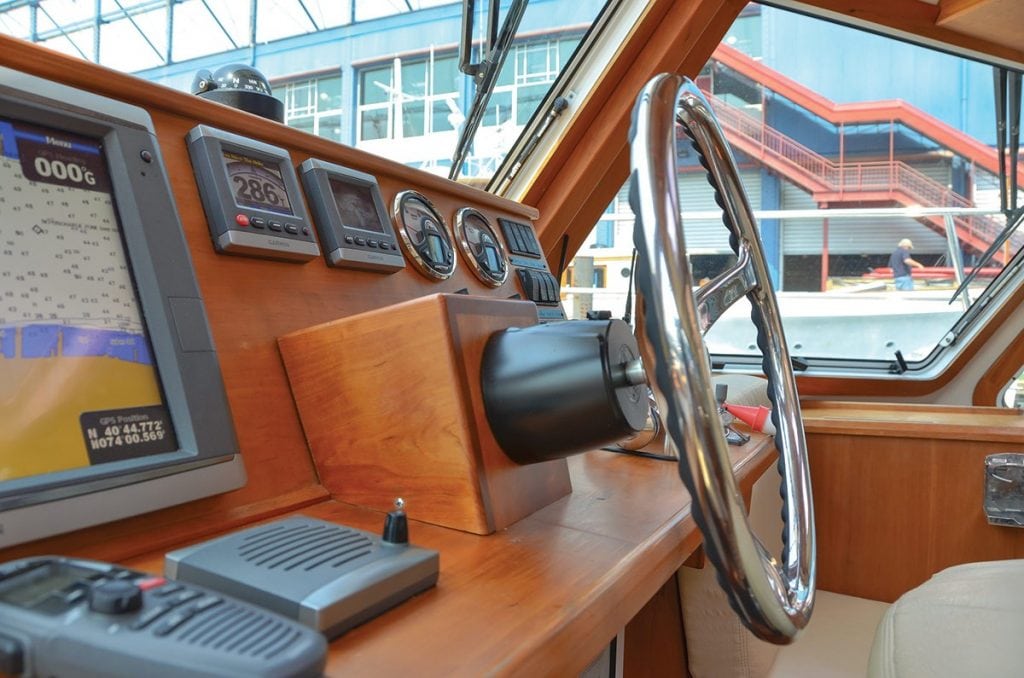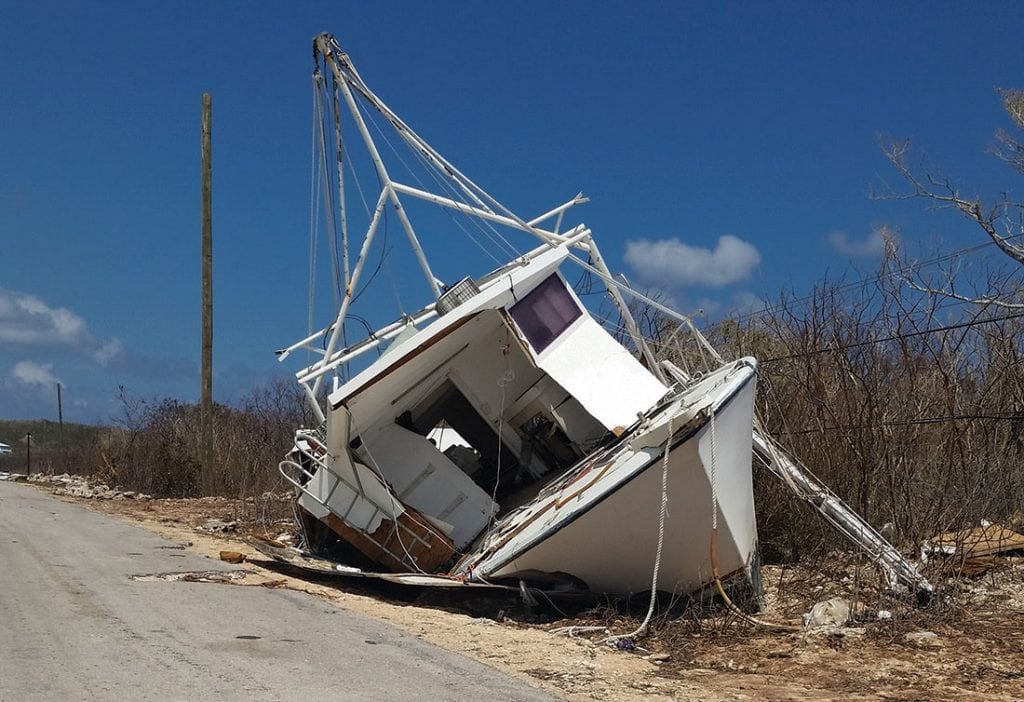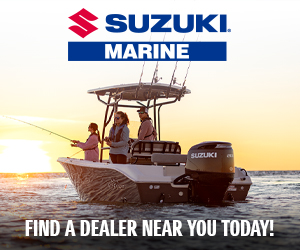Your hydraulic steering system is relatively simple to understand
The ability to make use of pressurized fluid in order to produce power dates all the way back to ancient times. Egyptians, Babylonians, Greeks, and Romans all used the concept to construct major irrigation canals and viaducts along with other hydraulic equipment such as pistons and screw pumps, a time-tested application that all boaters have to deal with. Whether you have inboard, outboard or stern drive power, and while a particular system may be dependent on vessel speed, size of the rudder(s), hull design, props, number of helm stations, and horsepower, it all operates on the same principle. Here’s a look at a basic system, its components and how they work together.
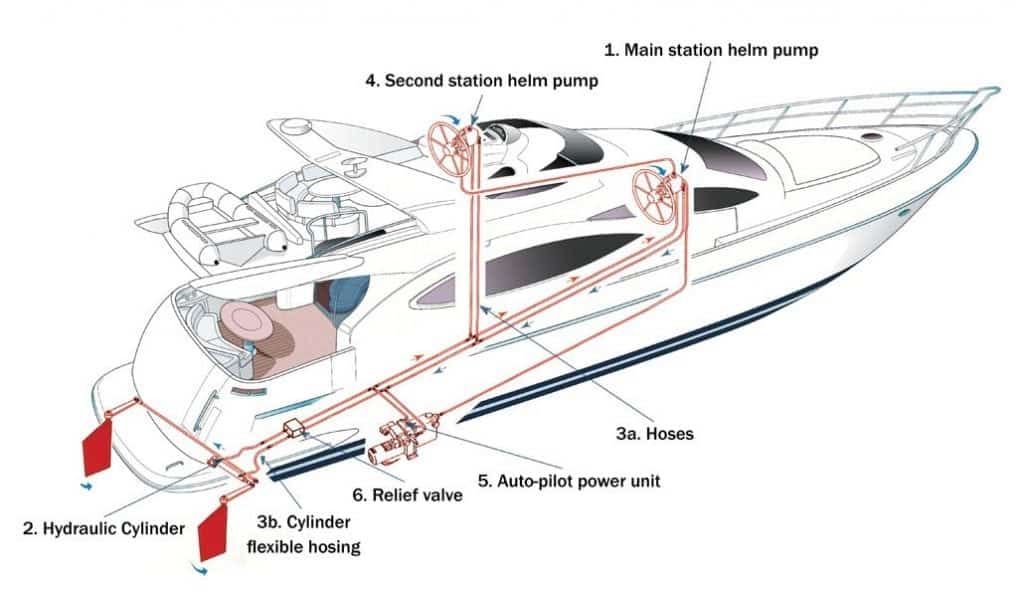
The wheel that you so often have your hands on is where it all starts, and at its most simple configuration there are three main parts to a hydraulic steering system. Going downstream, there is a pump containing an integral reservoir for the hydraulic oil. Lines from the pump pass on the inputs—turn to starboard, turn to port—to a ram that connects to a rudder or rudders on inboard powered boats, or to an outboard engine or multiple engines as equipped on a particular vessel.
Direct the wheel in either direction and hydraulic oil is forced through the lines to the ram to either extend or retract the cylinder. A check valve, usually set to a certain range of psi as per the manufacturer’s operating standards for that particular system—typically a pressurized three-line one—prevents the oil from returning in the same direction and instead, is forced back the other way through another line to the pump attached to the wheel at the helm. The process is repeated as you turn port to starboard and back again.
Of course, the bigger the boat, the bigger and sometimes a bit more complex the system will have to be. For example, when adding autopilot, power assist or full power steering, an engine-driven or electrically operated pump is put in the mix to boost the hydraulic pressure in the lines. These more advanced systems may also have separate oil reservoirs and valves as separate components.
The tendency to overlook this particular system is common as it is mostly a reliable operation. But because of its important role to get us from here to there and back, let’s look at some of the maintenance points to include in your checklist.
If you’re a seasonal boater, give the system a good look over at least twice—once when you splash it and again when it’s time to put the boat up for winter. That’s not to say weekly inspections are unreasonable. If you are a year-round boater, check things out every four months or so to be on the safe side. One old salt once said to me, “Kid, you can’t get out and change a flat tire out there.”
If your system’s manufacturer manual is not safely tucked away along with all your other ones in a watertight storage container, get one either by contacting the company or downloading it from the website. The first thing I check is the level in the oil reservoir. It should be almost up to the top. If
you find you need to add some, follow the recommendations as noted.
Next, give the wheel several turns going lock-to-lock, and note the “feel” as you do so. It should be smooth. If not, if it lags or puts up a fight, you may have air in the system that will need to be bled out. Contact your manufacturer on the correct procedure before you do it yourself.
You also should check the oil to make sure it is still clean. Hydraulic steering fluid is usually clear and has a light color to it. If it is dark or black in color, it’s time to swap it with the correct hydraulic oil as specified by the manufacturer. Have your system’s dealer or your marina service center do the job as they have the tools and materials to get the old oil out and put new, fresh oil in. When you’re away from the dock, always have enough on board to get you home.
Turning the wheel back and forth puts the system under pressure allowing you to easily see if there are any oil leaks. This process requires two people: one to work the wheel and the other to note all those places where leaks can occur. Leaks could occur anywhere there is a connection, hose, fastener, or fitting, whether at the pump or where the lines connect to the ram. They are easy to spot and can be readily seen by wiping the connection point with a clean paper towel. A visual inspection of the ram is also important. Make sure nothing is obstructing the movement or that there isn’t anything around that might jam or damage it in any way. On outboards, always check for corrosion. It’s a good idea to grease the shaft once a year as well.
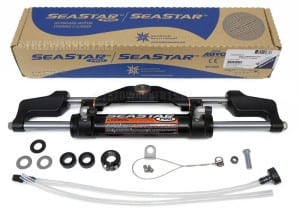
Your hydraulic steering system is relatively simple to understand and easy to maintain. With a little well-spent time to make sure everything is working as it should, your time on the water will be that much safer and give you that peace of mind you seek when going out on the water
By Ken Kreisler
, Southern Boating Magazine November, 2015

